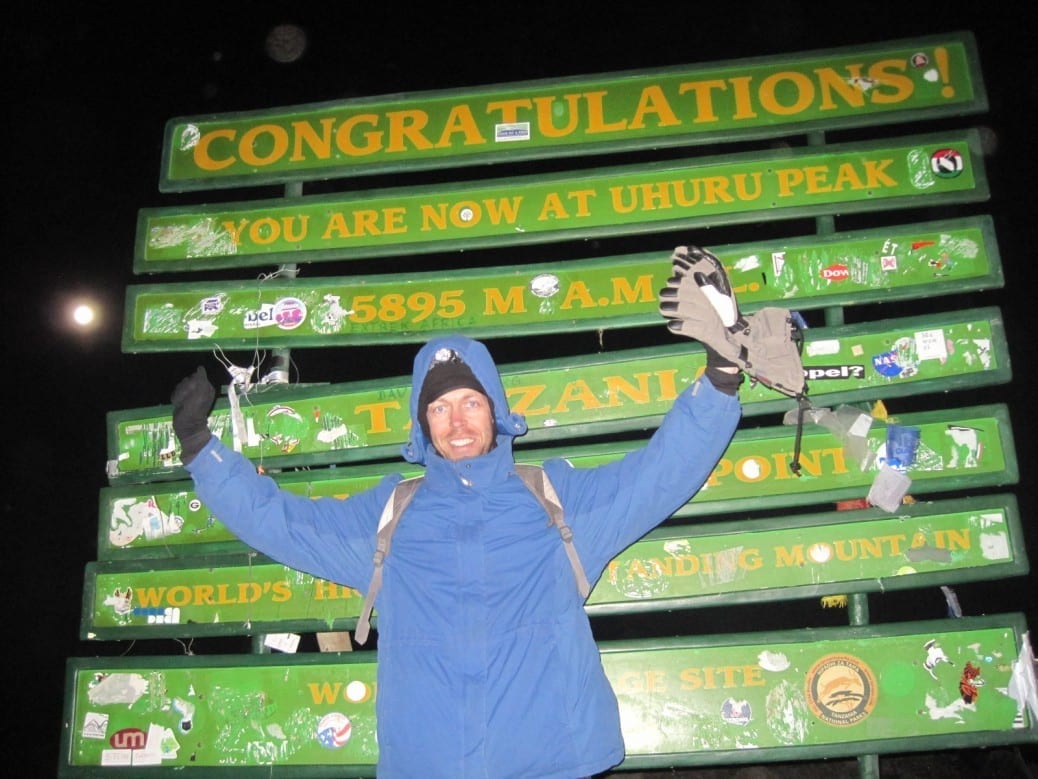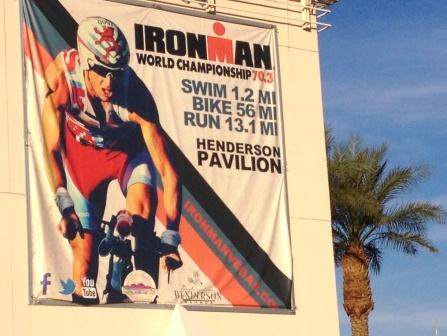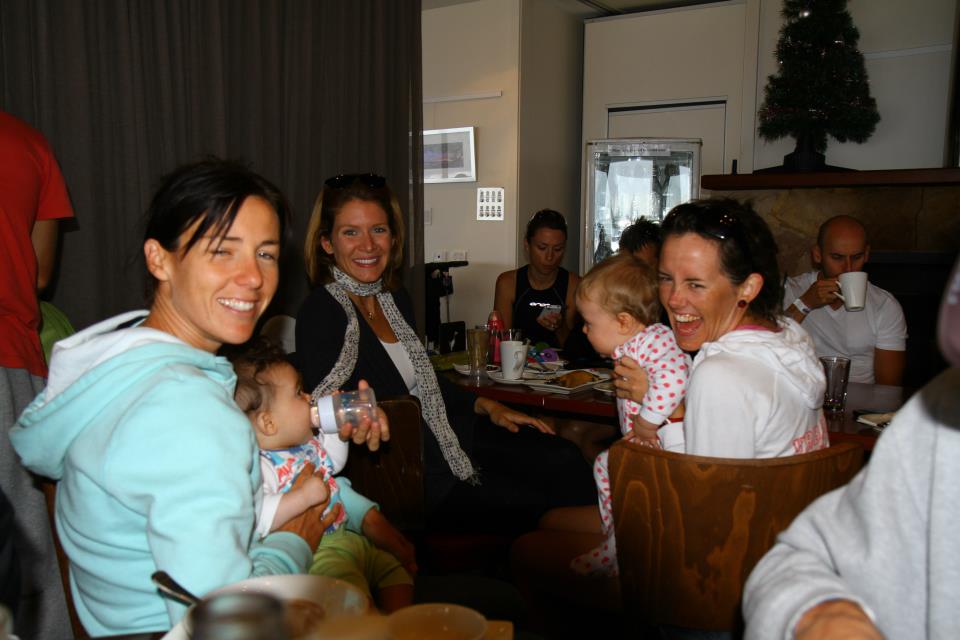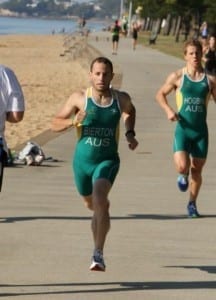“I entered a trance like state not worrying where or how much further there was to go. Every time I did look up the sight of Kibo Peak – the summit of Mount Kilimanjaro – was enough to keep me going.”
Follow Athlete David Feltons journey in his attempt to summit the worlds tallest free standing mountain – Mount Kilimanjaro…..
This is a blog of my attempt to climb Mount Kilimanjaro, in Tanzania, at 5,895m the world’s tallest free standing mountain.
Having spent a while researching companies and routes I decided upon Ahsante Tours – a local operator with lots of good reviews – and the Lemosho Route. A route to the western side of the mountain, this passes through various climatic zones and offers the chance to trek through diverse landscapes from the forest at the base to the moor, alpine desert and stone scree approaching the peak.
One of the longer options, Lemosho provides the most opportunity for acclimatisation and therefore aids success in summiting. This is in contrast to the more direct alternatives such as Machame – a popular, well-travelled route known simply as the ‘coca cola’ option, or Marangu – the whisky route (similar to Machame, just a little more refined!).
I’d like to say I employed the same approach when it came to choosing the airline – South African Airways – but this was purely down to cost. I figured it was going to be a long journey come what may. Having said that, they were perfectly fine and offered an interesting mix of meals from Bland to Seafood and Kosha to Vegetarian. It wasn’t a full flight either so with no one next to me I was able to squeeze my horizontal frame across two seats and a solid seven hours sleep ensued!
Day -3 / -2
Connections between Perth / Jo ’burg / Dar es Salaam and Kilimanjaro airports largely passed without incident, the only exception being in Dar where my passport was taken for processing of an entry visa only for it to be lost in the system for over an hour. I say system, but perhaps melee is a better word. Luckily one of the officials eventually matched my panic stricken face with its less stressed version inside my passport and I was on my way again. A last minute pack and unfavourable traffic conditions en-route to the airport threatened to derail the trip before it had even begun. Arriving at the Qantas check-in around 6.20pm for a 6.50pm flight (headed for Perth) I was told the gate had just closed. Application of a little charm however and hey presto – the bags were on the same flight as me! All I had to do then was sit back, relax and contemplate the many items I’d forgotten to pack…
Day -1
The Weru Weru River Lodge was a nice, new comfortable hotel located about 40 mins outside of Moshi – the nearest town to Kilimanjaro. Later that day I had a visit from the guys at Ahsante Tours to talk me through the trek; what to expect each day, clothing and equipment requirements etc. Following this debrief my guide, Michael, wanted to look over my provisions to make sure they were adequate. I took the occasional nod as he rummaged through my gear to be an encouraging sign however he did literally split my gear in two stating one half should be kept clean solely for summit night. This didn’t leave me much for the remaining six days. No comment was made on the 20 chocolate bars hiding out in the bottom of my bag.
In an attempt to replenish some of the missing items I mentioned that I might head into town. With some not so subtle warnings about ‘fly catchers’ – me being the fly – I accepted Michaels offer to tag along and swot away any unwanted interest. Turns out this was a good move and I managed to escape with everything I needed plus only a single wristband containing the words ‘pole-pole’ – slowly, slowly in Swahili. I would come to live and breathe this mantra, along with ‘maji, maji’ – water / drink over the coming days.
There were a few pieces of equipment I needed to hire; sleeping bag, down jacket, waterproofs etc. and these were brought to the hotel for me to try on. It was at this point that I met my companions on the trip, Matt and Courtney from the US. In planning the event I knew that I would be joining an American couple, on their honeymoon. I must admit I had a few reservations – given I would be spending most of the next 7 days with them – but turns out they were around my age and super nice. They’d actually gotten married two years ago, but this trip – a prerequisite to Courtney saying ‘yes’ – had taken a while to organise, largely due to Matt not being overly outdoorsy.
During these introductions the topic of Diamox cropped up. A medication to prevent the onset of altitude sickness, I’d been advised by my doctor in Melbourne to take these two days before starting the trek and stop once I’d reached the summit. A difference of opinion between this advice and even between the two guides themselves was clear – one suggesting not to take them at all (I’d already consumed three by this point, but kept quiet), and the other somewhere in between – I went with a middle ground being half a tablet on certain days.
Day 1
Lemosho Glades (2100m) to Big Tree (2700m)
Trek: 3 hours
Having being picked up from the hotel around 8am we spent the next three hours travelling around the western edge of the mountain to Lemosho Glades where we would register for the trek and provide passport details, just in case of… well you know, serious stuff.
Two thirds of this drive was ‘off-road’ – although even using the word ‘road’ is in itself a stretch of the imagination. Heavy rain had deteriorated the ‘road’ so much so that we had to get out before the main entrance and start our trek early. This wasn’t a problem as it was a nice day and we were all in high spirits.
An easy three hour amble through the forest reveals our first campsite, Big Tree. Aside from the guides who accompanied us on the walk the rest of the team – 8 porters, a cook and a waiter – were already at camp and had spent the time erecting the tents and making preparations for the evening meal. A pleasant offering, we were left wondering what all the hype was about if this was to be a flavour of things to come. On that note, we retired to our tents where we spent a balmy night under the stars.
Day 2

Big Tree (2700m) to Shira 2 (3850m)
Trek: 8 hours
Day 2 started with a friendly morning wake-up call and a bowl of warm water outside the tent. This was followed by a call to the mess tent and a breakfast of Tanzanian porridge (not quite sure of its ingredients but an earthy brown in colour) and a side of eggs in a sort of omelette shape. This was to be repeated over the rest of the week, and while I had my doubts over the porridge initially when I was told it would help me surge up the mountain I must admit to having a second helping. Anything to improve my chances! By the end of the trip I’d actually grown to like it, albeit with a large spoonful of sugar mixed in!
After easing into the trek on Day 1, Day 2 – the second hardest trek of the trip – brought us back down to earth with a bump. An 8 hour, 14km leg with an overall altitude gain in excess of 1000m saw us lose two of the less experienced porters to mountain sickness. I should highlight that while we carried our own daypacks, the porters were responsible for lugging our rucksacks on their back while balancing the tents and other ancillary equipment on their heads. How they managed to do this over the rough terrain, and at a pace quicker than ours, was truly incredible. I vow to remember these feats of strength, agility and determination whenever I think I am having a tough day at the office.
Unfortunately as the above two porters were carrying our rucksacks we had no clean clothes to change into when arriving at camp, Shira 2, nor sleeping bags to keep warm in. A guide plus some of the remaining porters had to double back, locate the sick and carry their loads back to camp. After such a long day, I’m sure not what they’d envisaged.
The contrast in temperature between night and day was incredible and we sound found ourselves layering up just to go to bed. I think it dropped to about freezing that night as I awoke to find my tent covered in ice. The lack of cloud cover did present the first glimpse of Mount Kilimanjaro in all its glory though – a magnificent sight, if still a huge distance between it and us.
Shira 2 (3850m) to Barranco (3950m)
Trek: 6 hours
The order of the day today was acclimatisation. A trek up to Lava Tower would see us reach an altitude of 4650m – still a full 1200m shy of the peak, but nevertheless a good test of our bodies. We took the 10km stretch ‘pole-pole’ and drank lots of water (typically 6 litres during the day and a litre and a half during the night), wary of the reducing oxygen levels.
Arriving there for a late lunch the effects of altitude were starting to take their toll on Matt, who’d lost his appetite – a common symptom. As I hadn’t, I gladly offered some assistance with his rations. I did feel a headache coming on – another common sign – but these were only the early stages of mild mountain sickness and as such somewhat to be expected. Earlier in the day, Michael had explained two of the more serious conditions of acute mountain sickness, being (1) High Altitude Cerebral Edema (HACE) – fluid on the lungs, and (2) High Altitude Pulmonary Edema (HAPE) – swelling of the brain tissue, symptoms including loss of memory, coordination and hallucinations. To offer us some comfort he did add that drinking lots of water offsets the risk of these issues, so armed with this intelligence I took another big swig from my water bottle. Heading back down to our camp for the night, Barranco (3976m) we started to feel a little better but, having experienced some exposure to altitude, nervous of things to come.
Day 4
Barranco (3850m) to Karanga (3860m)
Trek: 7 hours
A challenging start to Day 4 saw us tackle a stiff 250m climb up the Great Barranco Wall – good job I’d had my porridge. Near vertical in places we found ourselves climbing up bare rock faces’ trying to find hand and foot holds to haul ourselves up. One particularly narrow point is called ‘kissing rock’, the aim being to wrap your arms around it and hang on for dear life as you navigate around it. If Mitch had been watching, I’m sure she would have been jealous because for a couple of minutes that rock and I shared a moment.
After what seemed like an age we finally make it to the top of the wall and were rewarded with an amazing view of the Barranco valley to one side and an even more impressive Kili summit to the other. After a short rest we continued the trek down into a small valley, the landscape changing to an alpine desert with huge lava rocks scatter along the way, before reaching a fairly flat trail. With the camp in sight, the only matter now was crossing the Karanga Valley, a giant gash in the mountainside carved out before us. Carefully picking out our way down we avoided the icy patches where water had seeped out of the rocks and the cold overnight temperatures had turned it into ice. Unbelievably, Karanga Valley was the last point on the track at which to collect water, despite there being another two days’ worth of trekking ahead of us.
During dinner that night we heard the sounds of a nearby climber suffering badly from mountain sickness. This continued throughout most of the night and I can honestly say I’ve never encountered such a prolonged and violent bout of vomiting in my life. I had mixed emotions; (1) I felt extremely sorry for the person and wished I could help, but (2) it was starting to make me feel sick and question my own stomach condition. Submerging myself into a terrible book about the life and times of Richard Branson – borrowed from the tour company – provided limited respite. The next morning I saw the poor chap being hurried down the mountain on a wooden stretcher with a porter on each corner. As you can imagine, this did nothing to aid our confidence levels.
Day 5
Karanga (3860m) to Barafu (4600m)
Trek: 5 hours
Day 5 involved a steady gain in altitude as we set our sights on a jagged little ridge way off in the distance, Barafu – Base camp. We took the climb slowly as approaching 4000m above sea level oxygen levels were becoming severely restricted at around 50% of those enjoyed at the base of the mountain. Focussing on Matts boots in front of me, I entered a trance like state not worrying where or how much further there was to go. Every time I did look up the sight of Kibo Peak – the summit of Mount Kilimanjaro – was enough to keep me going.
Arriving at camp our tents looked to be perched precariously on the edge of the mountain, but the half inch foam mattress, now rather smelly sleeping bag and the thoughts of delving further into the sordid history of Mr. Branson enticed me in. There I lay until lunch, an omelet and chip concoction today.
More resting after lunch was only interrupted by our guides giving us a final briefing on the summit climb. Whether it was the thought of how I put on six layers, and still retain movement, the realization that this was it or simply a case of mountain sickness, a headache formed. This was no usual headache either but one of those where you moved your head and it took a few minutes for it to catch up with you. I sneezed a couple of times and regretted it for the next hour. One last check of the toe nails – all still there and attached – and I put on some of the layers, the rest being stuffed inside the sleeping bag with me to keep them warm.
Day 6
Barafu (4600m) to Millennium Camp (3810m)
Trek: 14 hours
Day 6 began just before midnight as a call to the mess tent revealed one final shot of porridge. Rugged up to the max, I donned my balaclava, head torch and down jacket and fell in to line behind Michael as we made our way through camp and towards the final ascent – all the while ‘pole-pole’. Ahead of us there were twinkling lights of other head torches as people keener than us had started their walk to the stars.
Early progress was good and a Diamox taken the night before had done much to quell the pounding headache. After an hour or so I pulled out my iPod to give me that extra boost, only to find that my carefully prepared songs would last about 30mins as the battery was already flashing. As we continued up, we saw a number of people being sick and some literally run down the mountain with a porter under each arm as the signs of altitude sickness had developed to a worrying level. We made slow but steady progress, passing a few as they rested, the intent being not to stop if at all possible as the cold and wind was so aggressive. Delving into my bag I unearthed the last of the mars bars and admitted to feeling a little underprepared.
When it looked like Stella Point – the first real milestone at 5685m – was never getting any closer, Michael said ‘an hour to go’. Recalling his pep talk the day before ‘pain is temporary, pride is forever’ I pushed on but can honestly say that hour was the toughest test yet and took everything I had and some.
And so, after over six hours of gruelling uphill climbing we made it to Stella Point and hugged it out. From there, the 45 min walk to Uhuru Peak – at 5895m the true Roof of Africa – was a mere gentle incline. We even managed to pass a few ahead of us to make sure enough time was offered for the obligatory photographs. Having captured the moment (several times) Michael and I sat down and watched the sun come up, illuminating the massive snow covered crater that lay in front of us. At that point, all the hard work, blisters, freezing cold overnight toilet manoeuvres and shortage of showers paid off – I’d done it.
With the risks of altitude a constant threat we quickly set about our descent back to Barafu, where we found out that after a couple of hours rest we had to relocate further down the mountainside to Millennium camp, a safer alternative at 3,810m.
Day 7
Millennium Camp (3810m) to Mweka Gate (1800m)
Trek: 6 hours
Day 7 started as usual but after we’d packed up camp the team celebrated our success on the mountain with a couple of traditional Tanzanian songs. Not entirely sure of the lyrics, but whenever the chorus came around we’d pick out the words ‘Mount Kilimanjaro’ or ‘Hakuna Matata’ and join in. I think this was appreciated; the funny looks were somewhat difficult to decipher.
Frivolities of the day over with, we were faced with a 6 hour trek back to civilisation. Although jubilant from summiting, everyone was feeling a little worse for wear – particularly Matt who’d lost a toe nail – so it turned out to be a bit of a slog. Nevertheless, we made it to Mweka Gate where we signed in to confirm our return and gained the all-important certificate of achievement.
A short drive back to the Ahsante office, we were advised that lunch, and dinner, was included. A nice surprise, I would have loved to take a shower before lunch but instead we headed straight there. It did give us the chance to take some final photographs in our mountain weary forms should anyone forget just how hard it was.
Stomachs full we moved on to our hotel where I spent the next three hours trying to tease any sort of water out of the shower. When it came, it was freezing cold and not exactly what I’d spent the last seven days dreaming about. The same refreshing wake-up lay in store the following morning, after which I sadly began my two day journey back to Melbourne – spurred on only by the thoughts of my invitingly thick mattress and a drive to recreate the porridge recipe!
Discover more from Tri Alliance Triathlon Community
Subscribe to get the latest posts sent to your email.










